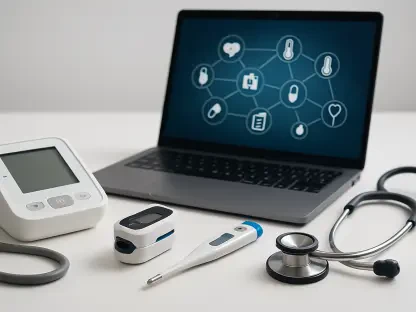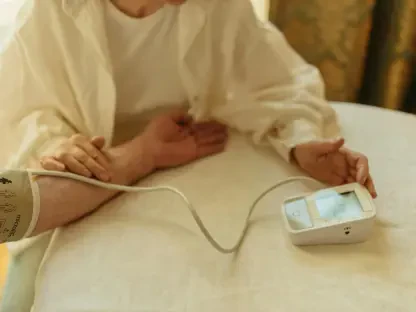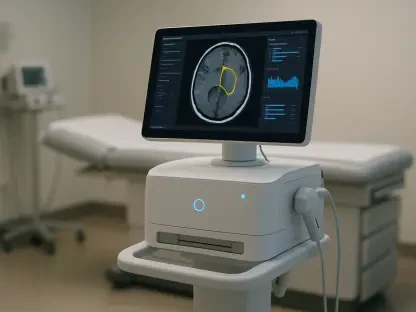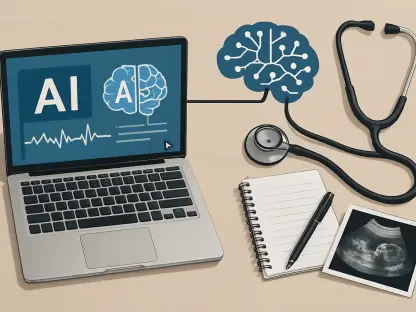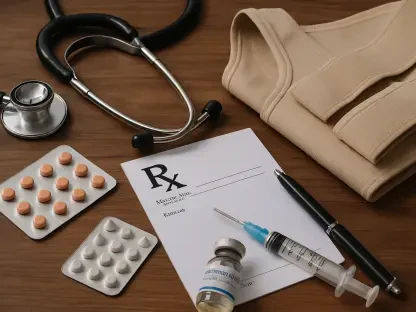On June 14 each year, people across the globe pay tribute to the heroic acts of voluntary blood donors whose contributions are pivotal to healthcare systems everywhere. These selfless individuals provide the vital resource of blood, crucial not only for emergencies but also for routine medical diagnostics and treatments. Their regular donations ensure the sustainability and readiness of healthcare services. As World Blood Donor Day unfolds annually, it spotlights the need for ongoing donations and seeks to build a robust culture of regular donor participation. It is a call to action for communities worldwide to recognize and deepen their engagement with the life-saving practice of donating blood.
The Essential Role of Blood Donations in Healthcare
Beyond Immediate Life-Saving Benefits
Blood donations are an instrumental part of medical interventions, ranging from emergency surgeries to everyday treatments for chronic illnesses. A steady supply of donated blood is essential for a wide variety of medical needs beyond those dramatic emergencies often highlighted in the media. Routine procedures, such as childbirth and cancer therapies, rely on regular access to blood. Moreover, less visible necessities include the management of conditions like sickle cell disease, often requiring ongoing blood transfusions for patients. Blood donations also act swiftly during crises such as natural disasters or conflict situations, where rapid intervention is necessary to save lives.
Daily medical practices greatly benefit from a consistent influx of voluntary blood contributions. These donations directly feed into diagnostic processes, making early detection and treatment of diseases possible while enhancing overall health outcomes. Whether it’s for identifying complex conditions like anemia and diabetes or monitoring patient recovery, a well-stocked blood supply enhances healthcare quality. In many ways, blood donors are foundational to reliable healthcare delivery systems, impacting community health at large by providing the backbone for medical diagnostics and treatment.
Facilitation of Key Diagnostic Procedures
One of the less visible yet indispensable roles of blood donations lies in their contribution to diagnostic testing. With every donation, hospitals receive vital components needed for critical diagnostic tests, such as Complete Blood Counts (CBC), blood typing, and cross-matching. These tests are essential in assessing general health and spotting irregularities, like infections or clotting disorders, at early stages. The availability of donated blood ensures that healthcare providers have the resources necessary to diagnose and monitor a plethora of conditions efficiently, allowing them to refine treatment plans and improve patient prognosis.
Diagnostic advancements are supported significantly by a steady flow of donated blood, streamlining the process for healthcare professionals aiming to provide precise care. For patients with specific conditions necessitating regular blood monitoring, such as diabetics needing glucose tests or individuals managing anemia, donated blood underpins the reliability and accuracy of healthcare delivery. As donation practices evolve, technological innovations may enhance these processes further, but currently, voluntary blood contributions remain the linchpin ensuring accurate diagnostics and patient care.
World Blood Donor Day: A Global Initiative
Recognition and Motivation for Donors
World Blood Donor Day emerged as an initiative in recognition of voluntary blood donors who consistently contribute to global health improvement. Established by the World Health Organization and partners in 2004, this annual event celebrates the often-unrecognized acts of compassion and service demonstrated by donors. It emphasizes that through regular donations, donors become active participants in strengthening healthcare systems, saving lives, and providing hope to patients worldwide. This day is dedicated to raising awareness about the constant need for safe blood supplies, and aspirational themes like “Blood connects us all” encapsulate the profound impact of donor contributions.
This celebration extends beyond simple recognition. It aims to inspire potential donors and encourage existing ones to maintain their life-saving practice. By raising awareness about the global need for regular donations, World Blood Donor Day seeks to build a sustainable framework of blood donation communities that transcend cultural, geographical, and socioeconomic barriers. Healthcare providers and advocates use this platform to energetically promote the importance of donation, driving initiatives that incorporate technology for easier contribution processes and encouraging community engagement through innovative volunteer strategies.
Bridging the Gap in Blood Supply
The global demand for blood donations is an ever-present challenge, exacerbated by variables like seasonal donation drops, aging donor populations, and increasing pressures from medical advancements requiring more complex interventions. World Blood Donor Day seeks to bridge the gap between demand and supply, urging individuals to contribute regularly and spotlighting solutions like mobile donation units and streamlined donor programs. By advocating for regular donations, healthcare systems can buffer against shortages, ensuring preparedness for both everyday medical needs and unforeseen disasters.
Through international collaboration, governments, healthcare institutions, and advocacy groups work tirelessly to strengthen blood donation frameworks. Innovations such as app-based systems that facilitate donor matching and scheduling are changing the landscape, making donations more accessible while optimizing contributions to meet demand efficiently. World Blood Donor Day stands as a pivotal moment to amplify these efforts, nurturing an environment where each donation reinforces global health security and community resilience against challenges that loom ever closer in modern healthcare contexts.
The Lifelong Impact of Donating Blood
Health Benefits for Donors
Regular blood donation is advantageous not only for recipients but also for donors. Donating blood provides donors access to regular health check-ups, often encompassing screenings for various parameters, including iron levels. These check-ups can serve as an early alert system to potential health issues, promoting better overall awareness and management of personal health. Moreover, the act of donation has been linked to a reduction in iron overload, which may contribute to decreased risk of certain cardiovascular conditions, giving donors tangible health benefits while contributing to the welfare of others.
The emotional gratification derived from donating blood is significant, as donors often experience a profound sense of community connectedness and contribution to societal well-being. This sense of purpose and selfless service can enhance mental health, fostering a sense of accomplishment and altruism. By engaging in regular donation practices, donors are simultaneously safeguarding their health while making meaningful impacts on countless lives. These benefits underline the dual nature of donation: an opportunity to give back while investing in one’s health journey.
Addressing Global Blood Shortages
Blood shortages remain a pressing global concern, influencing healthcare delivery beyond prominent emergency headlines. Real-world challenges, including demographic shifts and increasing medical demands, compound the complexity of managing blood supplies. Regular, sustained donations are pivotal in overcoming these issues, with community-driven events like World Blood Donor Day serving as important focal points to draw attention to donation efforts. By celebrating donors and highlighting the essential nature of their contributions, such events galvanize support and spur volunteerism within communities, ensuring continuous supply lines for patient care.
Strategies to address blood shortages focus on crafting inclusive, accessible donation programs that cater to diverse populations. By removing barriers to donation and encouraging wider participation through innovative solutions like mobile units, technological integrations, and expansive outreach, donor demographics can be broadened. Backed by robust educational campaigns, the push toward consistent global donations remains pivotal in resolving blood shortages, allowing healthcare systems to meet growing patient demands seamlessly.
Future Innovations in Blood Donation
Enhancing Donor-Recipient Matching
As healthcare technology evolves, the future of blood donation promises improvements in donor-recipient matching processes. Innovations centered on precision and convenience have the potential to streamline donation activities, optimizing resource allocation, and minimizing mismatches. By integrating advanced databases and digital platforms, healthcare providers anticipate a future where donations are effectively aligned with recipient needs, improving outcomes and reducing wastage. This heightened accuracy in matching fosters more efficient use of donated blood, enhancing care delivery in specialized scenarios.
Emerging technologies may soon redefine donation experiences with concepts such as personalized donation tracks and predictive analytics tools steering donors toward specific opportunities where their contributions have the maximum impact. The utilization of mobile technologies can make scheduling and participation effortless, encouraging repeat donations and engaging new participants. As these innovations take root, blood donation’s positive influence on healthcare systems is poised for expansion, ensuring greater alignment between donor efforts and patient recovery journeys.
Streamlining Donation Logistics
The logistical aspects of blood donation have seen substantial enhancement through technology-driven solutions. Innovations like integrated donation apps and virtual platforms have simplified donor registration and scheduling, making it easier for individuals to contribute regularly. These systems extend the reach of donor campaigns while embracing convenient donation practices like mobile units that bring donation opportunities closer to donors’ locales. Streamlined logistics ensure that the entire donation process, from initial registration to post-donation recovery, becomes more efficient and accessible.
By leveraging digital solutions, blood donation campaigns have gained newfound agility, adapting quickly to donor needs while satisfying stringent safety and quality protocols. This holistic approach allows healthcare systems to respond swiftly to fluctuations in demand, providing consistently reliable blood supply channels. As logistics evolve, campaigns can further refine outreach methods, enhancing community engagement and fortifying donor networks, translating into positive gains for global health coherence and sustainability.
Conclusion: Rising to the Global Challenge
Each year on June 14, people around the world honor the incredible efforts of voluntary blood donors. These extraordinary individuals play a critical role in healthcare by providing blood, a vital substance necessary for both emergencies and everyday medical procedures. Blood donations help sustain healthcare services and ensure they are ready to respond to various medical needs. World Blood Donor Day serves to highlight the perpetual need for blood donations, encouraging a culture where regular donations become the norm. This day is not just a reminder of the critical role that donations play; it’s a call to action for everyone, urging communities globally to acknowledge and engage more actively in this life-saving effort.
The act of donating blood is not only an altruistic gesture but a crucial pillar upholding healthcare systems worldwide. Regular donors provide the necessary supplies that hospitals and clinics rely on to perform surgeries, treat injuries, and manage chronic conditions. Without this steady flow of contributions, many medical treatments would face severe disruption. World Blood Donor Day, thus, serves as both a celebration of these donors and a clarion call encouraging more people to embrace this invaluable practice. It’s a moment to deepen the collective commitment to saving lives through the simple yet powerful act of giving blood.




